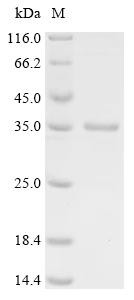Cookie preferences
This website uses cookies, which are necessary for the technical operation of the website and are always set. Other cookies, which increase the comfort when using this website, are used for direct advertising or to facilitate interaction with other websites and social networks, are only set with your consent.
Configuration
Technically required
These cookies are necessary for the basic functions of the shop.
"Allow all cookies" cookie
"Decline all cookies" cookie
CSRF token
Cookie preferences
Currency change
Customer-specific caching
FACT-Finder tracking
Individual prices
Selected shop
Session
Comfort functions
These cookies are used to make the shopping experience even more appealing, for example for the recognition of the visitor.
Note
Show the facebook fanpage in the right blod sidebar
Statistics & Tracking
Affiliate program
Conversion and usertracking via Google Tag Manager
Track device being used

If you have any questions, please use our Contact Form.
You can also order by e-mail: info@biomol.com
Larger quantity required? Request bulk
You can also order by e-mail: info@biomol.com
Larger quantity required? Request bulk
Organism: Homo sapiens (Human). Source: E.coli. Expression Region: 4417-4676aa. Protein Length:... more
Product information "E3 ubiquitin-protein ligase MYCBP2 (MYCBP2), partial, human, recombinant"
Organism: Homo sapiens (Human). Source: E.coli. Expression Region: 4417-4676aa. Protein Length: Partial. Tag Info: C-terminal 6xHis-tagged. Target Protein Sequence: ATSLKQDADD MCMICFTEAL SAAPAIQLDC SHIFHLQCCR RVLENRWLGP RITFGFISCP ICKNKINHIV LKDLLDPIKE LYEDVRRKAL MRLEYEGLHK SEAITTPGVR FYNDPAGYAM NRYAYYVCYK CRKAYFGGEA RCDAEAGRGD DYDPRELICG ACSDVSRAQM CPKHGTDFLE YKCRYCCSVA VFFCFGTTHF CNACHDDFQR MTSIPKEELP HCPAGPKGKQ LEGTECPLHV VHPPTGEEFA LGCGVCRNAH. Purity: Greater than 90% as determined by SDS-PAGE. Endotoxin: n/a. Biological Activity: n/a. Form: Liquid or Lyophilized powder. Buffer: If the delivery form is liquid, the default storage buffer is Tris/PBS-based buffer, 5%-50% glycerol. If the delivery form is lyophilized powder, the buffer before lyophilization is Tris/PBS-based buffer, 6% Trehalose, pH 8.0. Reconstitution: We recommend that this vial be briefly centrifuged prior to opening to bring the contents to the bottom. Please reconstitute protein in deionized sterile water to a concentration of 0.1-1.0 mg/mL.We recommend to add 5-50% of glycerol (final concentration) and aliquot for long-term storage at -20 °C/-80 °C. Our default final concentration of glycerol is 50%. Customers could use it as reference. Storage: The shelf life is related to many factors, storage state, buffer ingredients, storage temperature and the stability of the protein itself. Generally, the shelf life of liquid form is 6 months at -20 °C/-80 °C. The shelf life of lyophilized form is 12 months at -20 °C/-80 °C. Notes: Repeated freezing and thawing is not recommended. Store working aliquots at 4 °C for up to one week. Relevance: Atypical E3 ubiquitin-protein ligase which specifically mediates ubiquitination of threonine and serine residues on target proteins, instead of ubiquitinating lysine residues. Shows esterification activity towards both threonine and serine, with a preference for threonine, and acts via two essential catalytic cysteine residues that relay ubiquitin to its substrate via thioester intermediates. Interacts with the E2 enzymes UBE2D1, UBE2D3, UBE2E1 and UBE2L3. Plays a key role in neural development, probably by mediating ubiquitination of threonine residues on target proteins (Probable). Involved in different processes such as regulation of neurite outgrowth, synaptic growth, synaptogenesis and axon degeneration. Required for the formation of major central nervous system axon tracts. Required for proper axon growth by regulating axon navigation and axon branching: acts by regulating the subcellular location and stability of MAP3K12/DLK. Required for proper localization of retinogeniculate projections but not for eye-specific segregation. Regulates axon guidance in the olfactory system. Involved in Wallerian axon degeneration, an evolutionarily conserved process that drives the loss of damaged axons: acts by promoting destabilization of NMNAT2, probably via ubiquitination of NMNAT2. Catalyzes ubiquitination of threonine and/or serine residues on NMNAT2, consequences of threonine and/or serine ubiquitination are however unknown. Regulates the internalization of TRPV1 in peripheral sensory neurons. Mediates ubiquitination and subsequent proteasomal degradation of TSC2/tuberin. Independently of the E3 ubiquitin-protein ligase activity, also acts as a guanosine exchange factor (GEF) for RAN in neurons of dorsal root ganglia. May function as a facilitator or regulator of transcriptional activation by MYC. Acts in concert with HUWE1 to regulate the circadian clock gene expression by promoting the lithium-induced ubiquination and degradation of NR1D1. Reference: n/a. Function: nan
| Keywords: | Myc-binding protein 2, Protein associated with Myc, E3 ubiquitin-protein ligase MYCBP2, Recombinant Human E3 ubiquitin-protein ligase MYCBP2 (MYCBP2), partial |
| Supplier: | Cusabio |
| Supplier-Nr: | EP015272HU |
Properties
| Application: | Activity not tested |
| Conjugate: | No |
| Host: | E.coli |
| Species reactivity: | human |
| MW: | 36.3 kD |
| Purity: | >90% (SDS-PAGE) |
Database Information
| KEGG ID : | K10693 | Matching products |
| UniProt ID : | O75592 | Matching products |
| Gene ID : | GeneID 23077 | Matching products |
Handling & Safety
| Storage: | -20°C |
| Shipping: | +4°C (International: +4°C) |
Caution
Our products are for laboratory research use only: Not for administration to humans!
Our products are for laboratory research use only: Not for administration to humans!
You will get a certificate here
Viewed

